Engineers with the task of moving high-technology manufacturing equipment from A to B must ensure that lifting is meticulously planned and carried out in a safe manner.
Lifting Operations and Lifting Equipment Regulations 1998 - commonly known as LOLER - set out the responsibilities of people and organisations who own, operate or have control over lifting equipment.
LOLER legislation covers all lifting operations in work environments. According to the Health and Safety Executive (HSE), 40,000 people have musculoskeletal disorders due to unsafe lifting operations. With this in mind, it has never been more important to understand LOLER regulations and their purpose.
In this article, we cover some key considerations of LOLER for equipment relocations, explaining their relevance to this area of engineering.
What are LOLER Regulations?
LOLER regulations were originally introduced by the Health and Safety Commission (the previous name for the HSE), to supplement the 1992 Manual Handling Regulations. Their purpose is to ensure that all work equipment used in lifting operations is safe.
The regulations are relevant for both employers and workers, placing duties on anyone who owns or operates lifting equipment.

Why does LOLER matter?
LOLER regulations ensure that all lifting operations in the workplace which use lifting equipment are safe. The regulations require that lifting operations be planned by an experienced person who has taken and passed the LOLER Competent Person Training course.
When lifting operations are carried out, LOLER demands that they must be supervised appropriately and undertaken by an employee who is capable of completing the task in a safe way. This is to prevent the risk of injuries from moving machinery such as:
- People being hit by moving parts of machinery or material which is ejected or dropped
- Body parts being trapped between machinery parts such as belts, chains, or rollers
- Sharp edges causing cuts, punctures or severing injuries
- People being crushed between parts or objects moving together or past each other
- Scalds, burns or electric shocks
- Injuries due to unreliable or faulty equipment, such as loads dropping due to an equipment failure
Many types of equipment covered by LOLER also fall under the Supply of Machinery (Safety) Regulations. Read our Supply of Machinery (Safety) Regulations guide here
LOLER for equipment relocations
As LOLER covers all lifting equipment used in the workplace for the lifting and lowering of loads - as well as supporting, fixing and anchoring attachments - it applies broadly to many aspects of equipment relocation in high-technology industries such as semiconductor, pharmaceutical and print.
LOLER must be considered when performing any lifting operations at the equipment’s starting location, during an equipment move, and at the destination site for the equipment.
The regulations cover standalone lifting equipment used during an equipment relocation, as well as lifting equipment attached to vehicles.
LOLER applies to equipment including:
- Lifts
- Forklift trucks
- Cranes
- Elevating work platforms
- Hoists
The lifting accessories LOLER applies to include:
- Slings
- Eyebolts
- Chains

Meeting LOLER requirements
In equipment relocations, meeting LOLER requirements is the responsibility of personnel who a) are providing lifting equipment or b) have control over the use of lifting equipment.
Meeting LOLER requirements includes ensuring equipment is:
- Suitable for its purpose, and strong and stable enough to carry out a proposed task. The load or other apparatus being used (e.g. timber pallets) should also meet these conditions for the proposed task.
- Positioned in a way that prevents injury risk, such as from a load striking people or falling.
- Visibly marked with required information such as maximum load capacity, as well as other appropriate safety warnings and labels. Lifting accessories should also be marked as such.
The following considerations must also be made by a responsible engineer:
- Lifting is planned, supervised and performed in a safe manner by competent personnel.
- Equipment used for lifting people should be safe for this purpose and marked appropriately, eliminating or reducing risk.
- Before lifting equipment is used for the first time, and typically at least every six months thereafter, it must undergo a thorough examination, including accessories.
- A report is submitted following examinations, noting appropriate actions to take.
Inspections for LOLER
Regular examinations of lifting equipment are required for LOLER. The regulations specify the exact interval for inspections for various types of equipment and accessories.
Equipment should undergo a comprehensive check by a competent, qualified person; that is, an individual with the experience, knowledge and relevant training to assess the safety of the equipment.
Examinations involve a thorough inspection of the lifting equipment to check for wear and defects. Anything which could affect the safe operation of the equipment should be considered. Equipment should be suitable for its intended use and comply with all LOLER requirements. Any identified issues should be rectified by the provider or user of the lifting equipment, before the equipment is operated again.
Training for LOLER
Training is part of complying with LOLER. The purpose of training is to equip personnel involved with lifting equipment operations with the right skills and knowledge to work safely.
To ensure lifting equipment is used safely in equipment relocations and other operations, it is the responsibility of employers to provide; a) adequate training for team members involved in using the equipment and b) supervision for team members involved in using the equipment.
Training includes instructions on securing loads, how equipment should be inspected, and emergency situation response. Employees’ competency is assessed by their employers to assess if they need more training. In order to keep team members up to speed with LOLER regulations and safety practices, refresher training is provided when necessary.
Discuss your equipment relocation requirements
With IES, your high-technology equipment relocation is in experienced hands. We possess the technical knowledge and on-site skills to provide a seamless, fully-managed project.
Tell us your requirements today - use our contact form




